Flash Fill in Crime Scene and Evidence Photography
Steven Staggs
© 2014 from the book Crime Scene and Evidence Photography, 2nd Edition
See also the instructional videos on "Crime Scene and Evidence Photography"
A valuable technique for insuring accurate exposures, especially for scenes with deep shadows, is flash fill. In scenes illuminated by bright sunlight there will usually be dark shadow areas. Sometimes evidence is located in the shadows. Detail in the deep shadow areas may be lost when the exposure is based on the overall brightness of the scene. With the use of flash fill, the brightness level in the shadow areas can be raised to the overall brightness of the scene.
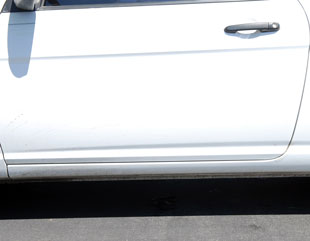 |
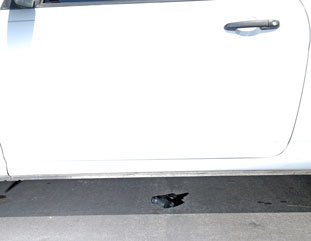 |
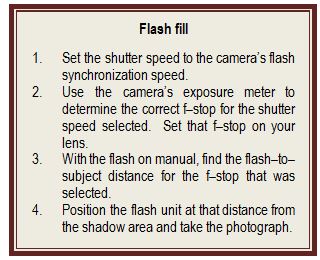
Many cameras with dedicated TTL (through-the-lens) flash systems can provide automatic flash fill. If you have a dedicated TTL flash system consult the equipment instruction manual for instructions on using flash fill in the camera's automatic exposure mode.
You can also use a camera and an electronic flash unit in manual modes for flash fill. First you must set the camera's shutter speed to the camera's flash synchronization speed (usually 1/60 or 1/125 second). Then use the camera's exposure meter to determine the correct f-stop for the shutter speed selected. Set that f-stop on your lens. With the flash on manual, find the flash-to-subject distance for the f-stop that was selected (the flash-to-subject distance for each f-stop is usually displayed in a chart on the back of the electronic flash). Position the flash unit at that distance from the shadow area and take the photograph.
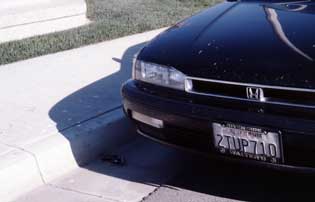 |
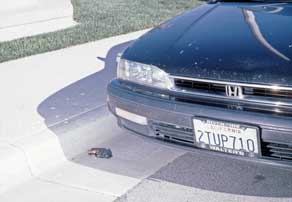 |
You may wish to use a flash remote cord so you can have more flexibility in choosing the proper angle to direct the electronic flash into the shadows.
 Flash Fill in Crime Scene and Evidence Photography Copyright: © 2014 by Steven Staggs. Copyright for this article is retained by the author, with publication rights granted to the Crime Scene Investigation Network. This is an Open Access article distributed under the terms of the Creative Commons Attribution-NonCommercial-NoDerivatives 4.0 International License which permits
unrestricted noncommercial use, distribution, and reproduction, provided the original work is
properly cited and not changed in any way.
Flash Fill in Crime Scene and Evidence Photography Copyright: © 2014 by Steven Staggs. Copyright for this article is retained by the author, with publication rights granted to the Crime Scene Investigation Network. This is an Open Access article distributed under the terms of the Creative Commons Attribution-NonCommercial-NoDerivatives 4.0 International License which permits
unrestricted noncommercial use, distribution, and reproduction, provided the original work is
properly cited and not changed in any way.
About the Author
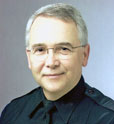 For 34 years Steven Staggs was a forensic photography instructor and trained more than 4,000 crime scene technicians and investigators for police and sheriff departments, district attorney offices, and federal agencies. He was also a guest speaker for investigator associations, appeared as a crime scene investigation expert on Discovery Channel's Unsolved History, and provided consulting to law enforcement agencies.
For 34 years Steven Staggs was a forensic photography instructor and trained more than 4,000 crime scene technicians and investigators for police and sheriff departments, district attorney offices, and federal agencies. He was also a guest speaker for investigator associations, appeared as a crime scene investigation expert on Discovery Channel's Unsolved History, and provided consulting to law enforcement agencies.
Steve has extensive experience in crime scene photography and identification. He has testified in superior court concerning his crime scene, evidence, and autopsy photography and has handled high profile cases including a nationally publicized serial homicide case.
Steve is the author of two books on crime scene and evidence photography, the text book Crime Scene and Evidence Photography and the Crime Scene and Evidence Photographer's Guide. The guide is a field handbook for crime scene and evidence photography, which sold over 10,000 copies and has been in use by investigators in more than 2,000 law enforcement agencies.
Steve retired in 2004 after 32 years in law enforcement, but continued to teach forensic photography and crime scene investigations at a university in Southern California.
Article submitted by the Author
Article posted: September 26, 2014

